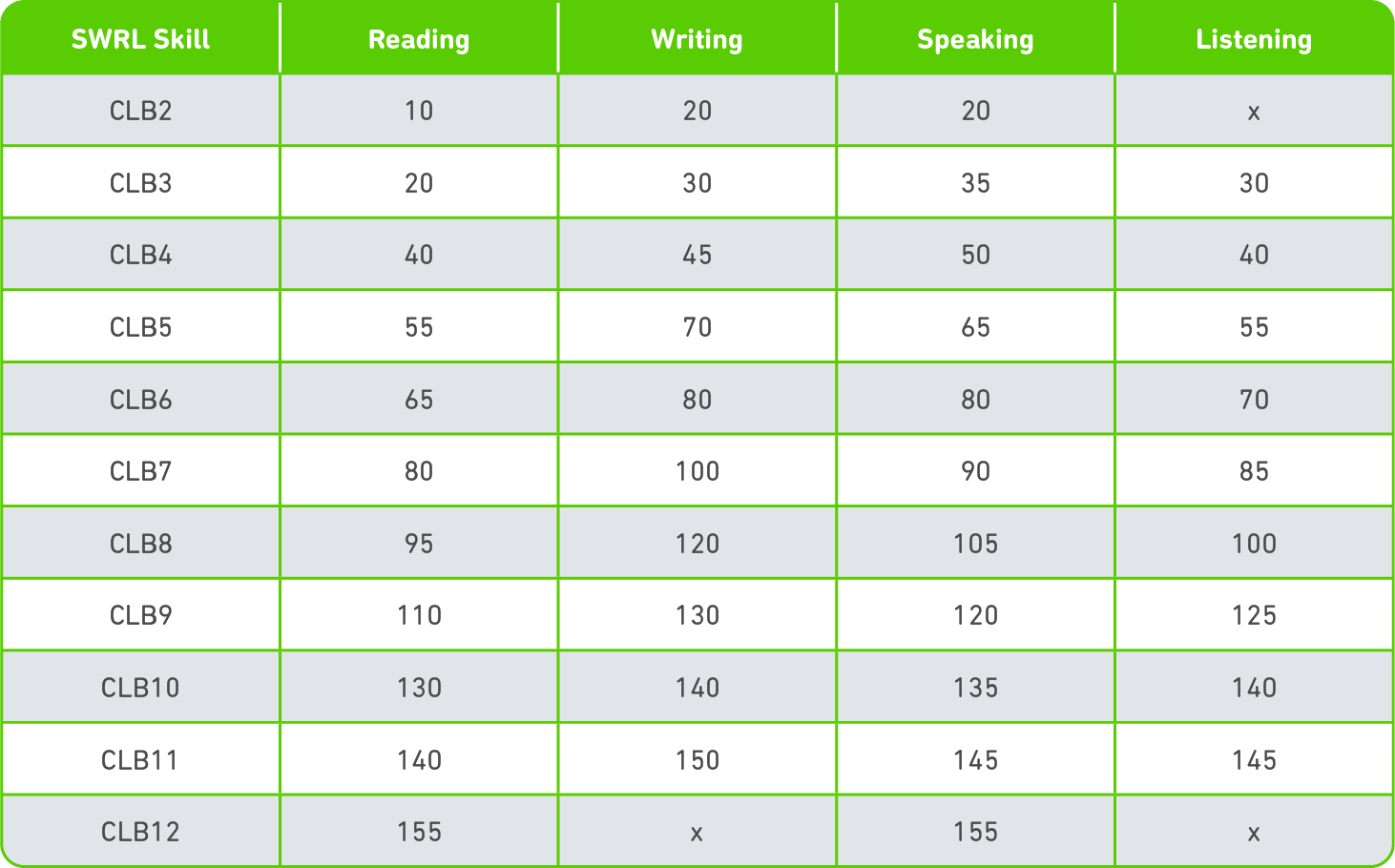The Canadian Language Benchmarks (CLB) is a descriptive scale of language ability in English as a Second Language (ESL) written as a12 benchmarks or reference points, along a continuum from basic to advanced. The scale provides a common framework for describing language proficiency across Canada, ensuring that everyone understands what is meant by different levels of language ability.
Canadian immigration pathways require applicants to demonstrate specific CLB levels to meet eligibility criteria. In addition, newcomer settlement programs like Language Instruction for Newcomers to Canada (LINC) use the CLB to tailor language instruction to learners’ current abilities—ensuring targeted, effective support for integration into Canadian life.
With the Duolingo English Test (DET) now aligned to the CLB, institutions and newcomers alike benefit from a modern, accessible test that fits seamlessly into Canada’s language policy ecosystem.
An independent, expert-led alignment study
To ensure the highest standards of validity, Duolingo commissioned an independent standard setting study in 2024, conducted by the Centre for Canadian Language Benchmarks (CCLB).
The study was led by Dr. Angel Arias (Carleton University) and Dr. Jeanne Sinclair (Memorial University), with consultation from Dr. Eunice Jang (University of Toronto). In March 2025, the findings were presented at the American Association for Applied Linguistics (AAAL) conference as part of the Duolingo x AAAL symposium series.
The study followed the standard-setting steps recommended by the Council of Europe (2009):
- Familiarization with CLB performance level descriptors and DET content
- Specification of alignment criteria
- Standard setting for threshold scores
- Evaluation of results
A panel of 15 language assessment experts, with extensive experience in the CLB framework, representing diverse regions and linguistic backgrounds across Canada, evaluated the DET’s alignment with CLB levels. They analyzed test-taker responses and the linguistic characteristics of DET tasks relative to assign CLB levels to points on the DET score scale for reading, writing, speaking, and listening. Final cut scores were determined after discussion and review.
A detailed mapping across four language skills
The expert panel fully aligned DET scores with CLB levels 3 – 11. The assigned DET scores make the test a reliable and easily interpretable option for assessing English proficiency across various high-stakes Canadian contexts.
This alignment supports decision-making in contexts where program-level requirements are tied to CLB benchmarks. It provides applicants and decision-makers a quick and easy way to evaluate DET scores skill by skill. For example:
- A DET writing score of 120 aligns with CLB 8
- A DET listening score of 100 aligns with CLB 8
- A DET speaking score of 135 aligns with CLB 10

A modern, accessible assessment option
Already trusted by thousands of institutions worldwide for its accessibility, affordability, and robust security, the DET is now positioned to serve not only higher education, but also licensing bodies, regulatory agencies, and immigration programs that rely on the CLB. Having DET scores independently aligned to CLB levels 3 through 11 gives decision-makers and program leads a modern, accessible assessment option that fits seamlessly into Canada’s broader language policy ecosystem.
